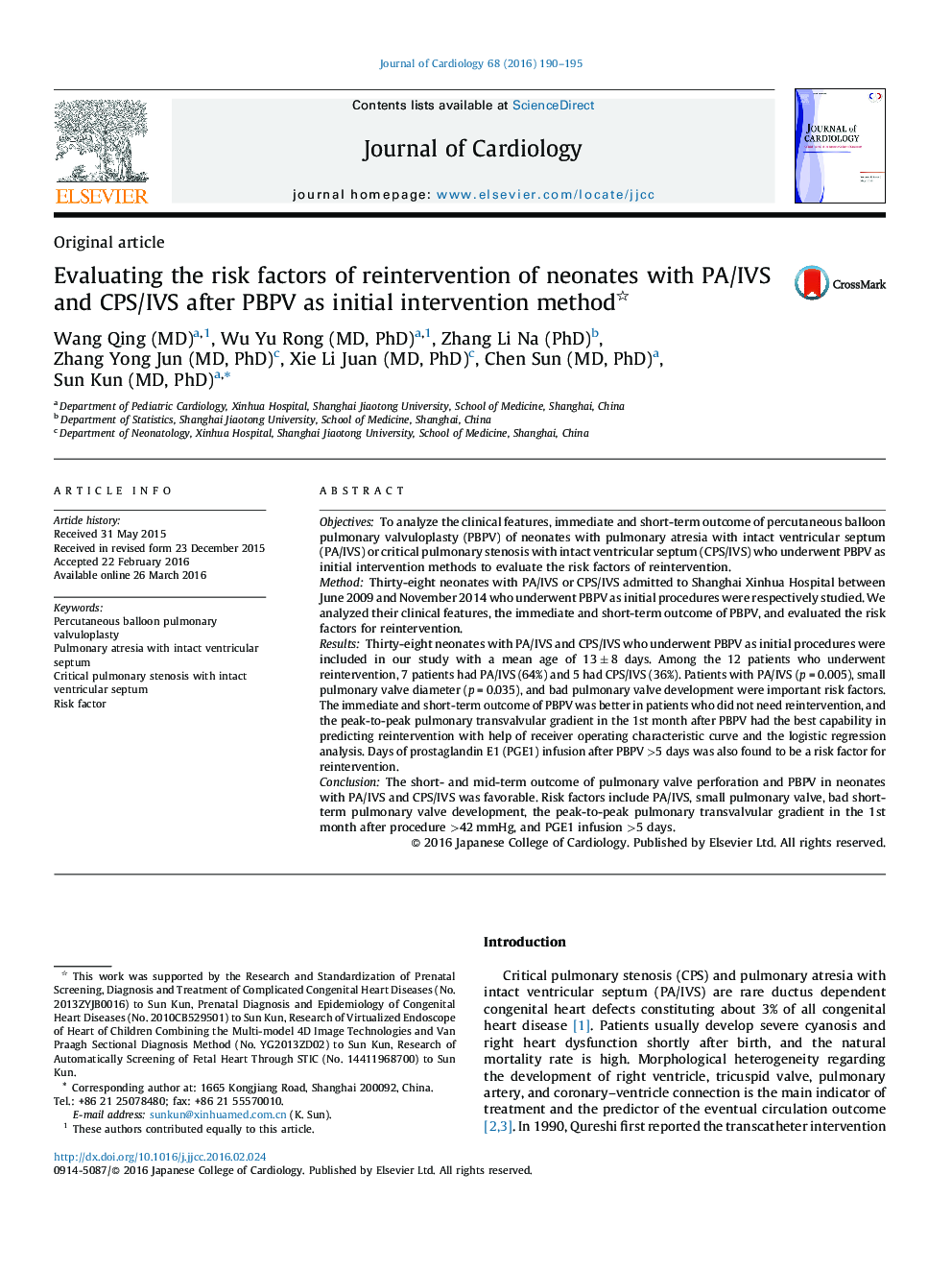| کد مقاله | کد نشریه | سال انتشار | مقاله انگلیسی | نسخه تمام متن |
|---|---|---|---|---|
| 2962766 | 1178504 | 2016 | 6 صفحه PDF | دانلود رایگان |

ObjectivesTo analyze the clinical features, immediate and short-term outcome of percutaneous balloon pulmonary valvuloplasty (PBPV) of neonates with pulmonary atresia with intact ventricular septum (PA/IVS) or critical pulmonary stenosis with intact ventricular septum (CPS/IVS) who underwent PBPV as initial intervention methods to evaluate the risk factors of reintervention.MethodThirty-eight neonates with PA/IVS or CPS/IVS admitted to Shanghai Xinhua Hospital between June 2009 and November 2014 who underwent PBPV as initial procedures were respectively studied. We analyzed their clinical features, the immediate and short-term outcome of PBPV, and evaluated the risk factors for reintervention.ResultsThirty-eight neonates with PA/IVS and CPS/IVS who underwent PBPV as initial procedures were included in our study with a mean age of 13 ± 8 days. Among the 12 patients who underwent reintervention, 7 patients had PA/IVS (64%) and 5 had CPS/IVS (36%). Patients with PA/IVS (p = 0.005), small pulmonary valve diameter (p = 0.035), and bad pulmonary valve development were important risk factors. The immediate and short-term outcome of PBPV was better in patients who did not need reintervention, and the peak-to-peak pulmonary transvalvular gradient in the 1st month after PBPV had the best capability in predicting reintervention with help of receiver operating characteristic curve and the logistic regression analysis. Days of prostaglandin E1 (PGE1) infusion after PBPV >5 days was also found to be a risk factor for reintervention.ConclusionThe short- and mid-term outcome of pulmonary valve perforation and PBPV in neonates with PA/IVS and CPS/IVS was favorable. Risk factors include PA/IVS, small pulmonary valve, bad short-term pulmonary valve development, the peak-to-peak pulmonary transvalvular gradient in the 1st month after procedure >42 mmHg, and PGE1 infusion >5 days.
Journal: Journal of Cardiology - Volume 68, Issue 3, September 2016, Pages 190–195